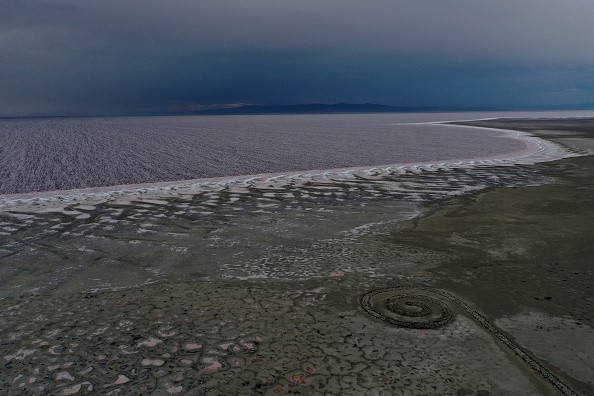Ecological collapse, toxic dust, economic consequences are among the few dangers feared as the largest natural lake west of the Mississippi shrinks, exceeding its lowest levels in recorded history.
Due to the recent megadrought triggered by climate change, waters were diverted away from the lake to be supplied to homes and crops in Utah, which contributed to the shrinking of the lake, according to Phys.org.
Efforts to Save Great Salt Lake
This stirred up the GOP-dominated state government as the lake hit the lowest point ever recorded in history, also the domestic needs for water in these country's fast-growing states has increased.
The government is finally awoken by this pending issue and has proposed an investment of $46 million into the lake this year, and the powerful House speaker went further into discussing extensively on the issue.
This newly developed method of rescue is feared to not be enough to save the dying lake and prevent the pending ecological disaster.

Consequences of Shrinking Great Salt Lake
The great salt lake up until its dilemma was the nation's biggest source of magnesium and could soon provide lithium, a key mineral for renewable energy batteries.
Due to the shrinkage, there has been a serious risk on the lake based economy, specifically on mineral extraction, brine shrimp, and recreation worth up to $1.3 billion.
These shrimps supports industries as food for fish farms and also nourishes millions of migrating birds that show up by the lake, but due to its shortage, the migrating birds can also be at risk in this shrinkage, according to NBC News.
The shrinkage is also posing dangers to the health as the air can be affected by arsenic-laced dust caused by the massive dry lake bed, this dust can cause huge health complications.

Great Salt Lake Hits Record Low
Last year the lake matched a 170-year record low and kept dropping, hitting a new low of 4,190.2 feet (1,277.2 meters) in October.
These devastating reports especially had its effects on its microbialites that were exposed to air thereby killing the vital ones. One of these microbes include a mushroom-like structure formed by furry, deep green mats of microbes, which are the base of the lake's food chain.
In the midst of these troubles, researchers are positive that this can all simply be fixed by water flowing into the lake again.
But due to the increase in the population of people in the state, the simple suggestion has proven to be difficult with about 3.28 million people and 200,000 homes with high water needs.
Additionally, about 65% of the water from the lake goes into agriculture which is one of the major importance of this lake.
The cost of doing nothing tends to be even higher, as the government begins a slow start towards helping the lake, although it might take time, they believe the least steps will still aid in saving the lake greatly.
Related Article : Ecosystem at Great Salt Lake on the Brink of Collapse Due to Dangerously Low Water Levels
For more news, updates about Great Salt Lake and similar topics don't forget to follow Nature World News!
© 2026 NatureWorldNews.com All rights reserved. Do not reproduce without permission.





